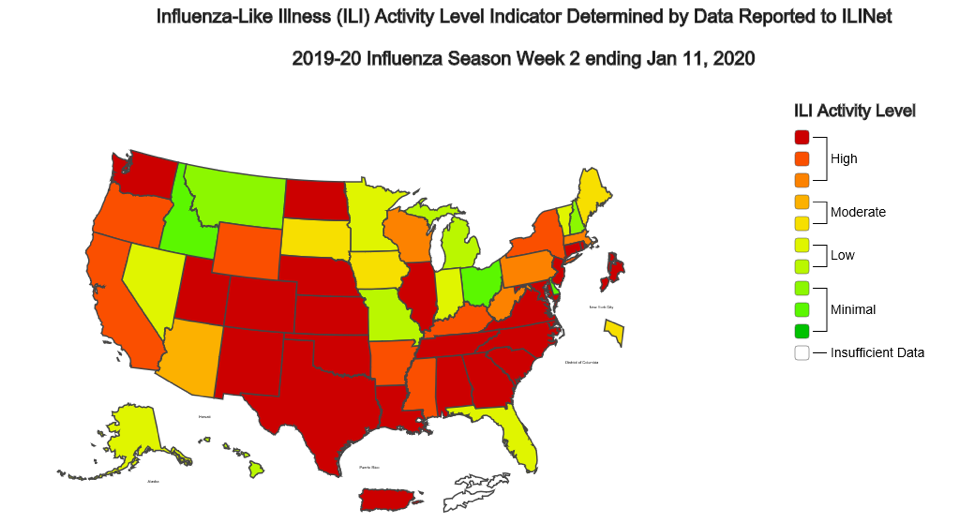Influenza Season is well into the 2019-20 season. The Centers for Disease Control (CDC) estimates that so far this season there have been at least 13 million flu illnesses, 120,000 hospitalizations and 6,600 deaths from flu. Early on, southern and southeastern states were the most affected, including Tennessee. This has continued to progress with an increasing number of states affected; see chart below.

For more information on your location, visit: https://www.cdc.gov/flu/weekly. This site is updated weekly.
This year, influenza vaccinations are most frequently administered using a quadrivalent vaccine. This vaccine includes two Influenza A (H1N1, H3N2) and two influenza B (Victoria, Yamagata) viruses. To this point, 62% of reported Influenza screens are Influenza B (Victoria strain most common) and 38% Influenza B (H1N1 most common). These are the groups identified as having the highest risk for acquiring influenza:
- Adults 65 years and older, children younger than 2 years old
- Pregnant women and women up to 2 weeks after the end of pregnancy
- American Indians and Alaska Natives
- People who live in nursing homes and other long-term care facilities
It is very important that these people get immunized. However, it is also beneficial for these people to have others immunized, due to a concept termed “herd immunity”. Herd immunity protects people who can’t get vaccinated because their immune system is weak and vaccines might make them sick. This includes babies, people with vaccine allergies, and anyone with an immune-suppressing disease like HIV or cancer.
If you’re not already vaccinated, it’s still not too late for a vaccine this season. It takes about two weeks after vaccination for antibodies to develop in the body and provide protection against flu.
For more information on flu prevention, symptoms, and treatment, visit: https://www.cdc.gov/flu/
Source: https://www.cdc.gov/flu/